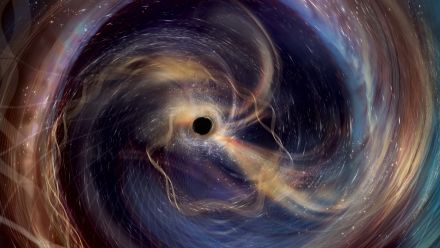Over the past 25 years, climate change has drastically altered Australiaās environment and biodiversity, with average temperatures increasing by 0.81 degrees Celsius and the number of threatened species rising by more than 50 per cent, according to a from The Ā鶹“«Ć½AV National University (ANU).
According to the reportās lead author, our access to the systems used to gather data and observe environmental changes is now coming under threat, adding to the challenges being faced.
Professor Albert Van Dijk says Australia does not operate its own Earth observation satellites and for decades has relied on other countries, particularly US agencies like NASA and the National Oceanic and Atmospheric Administration (NOAA), to supply the satellite imagery and climate records that āunderpin almost all aspectsā of environmental monitoring in Australia.
As the US administration threatens to scale back on environmental science funding, Professor Van Dijk is calling on the Ā鶹“«Ć½AV Government to invest in new and more robust environmental monitoring systems, to bolster the nationās environmental data sovereignty.
As Professor Van Dijk explains, you canāt protect what you canāt measure. He warns the slow erosion of Australiaās own monitoring networks may go unnoticed until itās too late.
āIf access to data streams from other countries is disrupted or discontinued, Australia has no back up plan,ā Professor Van Dijk said.
āOur own on-ground monitoring infrastructure is ageing and underfunded, and weather stations and stream gauges are being decommissioned or left unrepaired, groundwater and soil-moisture networks are patchy, and many regional areas are data deserts.ā
The calls coincide with the release of a led by Professor Van Dijk that examines 25 years of changes to Australiaās environment. The report is led by ANU in collaboration with the Terrestrial Ecosystem Research Network (TERN).
āSince 2000, Australiaās average land temperature has increased by 0.81āÆdegrees Celsius, with 16 more days above 35āÆdegrees Celsius each year, or a 22 per cent increase. Ocean temperatures around Australia have warmed by 0.43 degrees Celsius, fuelling more marine heatwaves and repeated of the Great Barrier Reef,ā he said.
āBetween 2000 and 2024, the number of listed threatened species in Australia has risen by 741, from 1,397 to 2,138, a 53āÆper cent increase. Counts of birds, mammals, frogs and plants have declined by more than 60 per cent in some cases. Their decline reflects habitat destruction, invasive species, climate stress and ecosystem disruption.
āHowever, there are signs of hope. In parts of eastern and northern Australia, vegetation condition has improved, likely driven by shifting rainfall patterns, reduced clearing and carbon dioxide fertilisation.
āRiver flows and wetland inundation have also recovered in some regions, while the hole in the ozone layer has started to close in response to global action on climate change.
āOther than rising temperatures and biodiversity decline, thereās no strong national trend in overall environmental condition. Instead, we see large swings driven by droughts, floods and fires. But some regions show long-term improvements, especially those recovering from the Millennium Drought.ā
The report draws on 25 years of data from the Bureau of Meteorology (BOM), TERN, national and state agencies, volunteer networks, and global satellite partnerships, including NASAās MODIS satellite program.
These records help researchers analyse patterns, detect trends, and understand the drivers that impact Australiaās environment over time. Without consistent satellite, station and survey data, researchers wouldnāt be able to track or respond to these changes.
But now, access to these data systems is becoming increasingly uncertain.
āThe US administration is proposing dramatic cuts to environmental science; NASAās Earth science funding could be halved, while NOAAās climate and weather programs face deep reductions,ā Professor Van Dijk said.
āThese agencies have already begun scaling back services. NOAA has closed labs, cut staff and announced the decommissioning of public data portals, while forecasting and satellite operations are under pressure.ā
In the 2025-26 Budget, the Albanese government committed $76 million to establish Environment Protection Australia (EPA), including the creation of a national agency, to better protect, restore and manage Australiaās environment.
Professor Van Dijk said a future EPA could play a crucial role in helping bolster Australiaās environmental monitoring infrastructure. But to do so, the agency must play a broader role than just regulation.
āIt should become a champion for environmental data, recognising that protecting nature requires knowing whatās happening where, and why. That means investing in the infrastructure to observe environmental changes, from satellites to sensors and surveys,ā he said.
āIt means forging durable partnerships with international agencies but also building more sovereign capability. It also means valuing the contributions of community groups and researchers and providing sustained support for the data they collect; citizen scientists remain a vital source of knowledge, but formal participation is declining, and long-term support is thin.ā
The Australiaās Environment: 25-Year TrendsāÆreport brings together satellite observations, weather and water records, and on-ground biodiversity and vegetation monitoring.
The report is available online at:
Professor Van Dijk, in collaboration with TERN, has been producing Australiaās Environment report for 10 years. Each year he rates the condition of the countyās environment on a scale from one to 10, along with scorecards for each state and territory.


